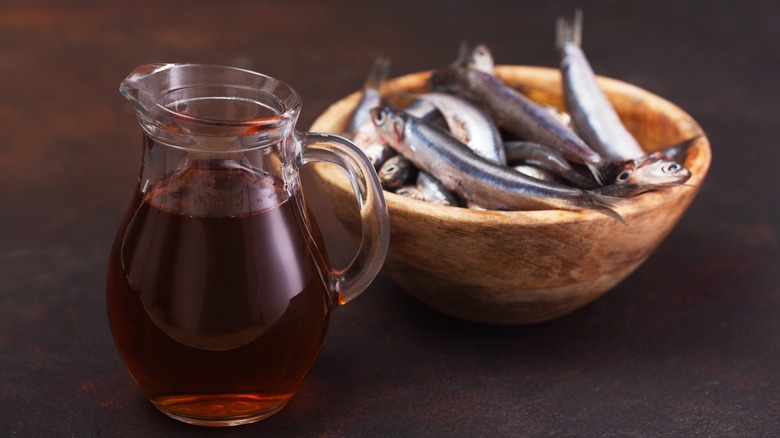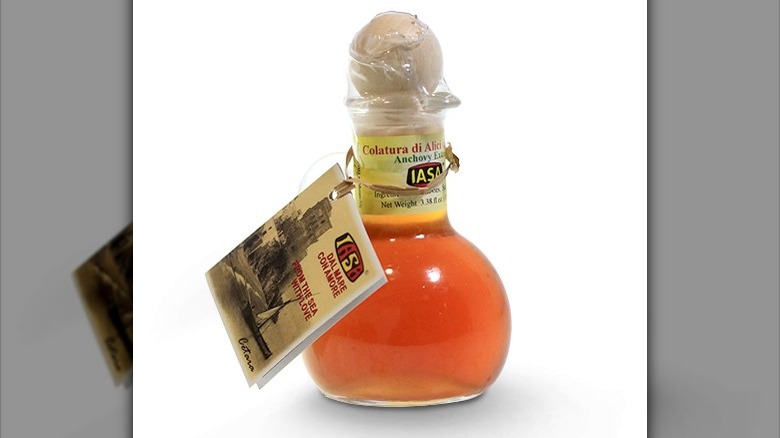The Ancient Anchovy Sauce That Takes 3 Years To Make
Are you a fan of anchovies? Not many people are into these small fish that can be "found in the Black Sea, Mediterranean, and Pacific and Atlantic Oceans" (via Love Food). In the U.S., anchovies are usually eaten when they're served in a Caesar salad or when a few of them are scattered on a pizza. Some will love them, and many will hate them, but few people have tried the delicious, high-quality anchovies, which should be tender, creamy, and even slightly sweet (via Town And Country Magazine).
Those who know their anchovies often consider Italian anchovies from Sicily and Calabria as the best ones, and they can be fresh (alici) or cured (acchiughe). If you've only encountered anchovies in a Caesar or atop pizza, Italians found many other ways to incorporate the salty fish into their traditional dishes. For example, they're mixed with pasta for a dish called pasta con le sarde, or mixed into a creamy tuna sauce and drizzled over roasted veal for a legendary dish called vitello tonnato. In the region of Piemonte, vegetables are often dipped into a warm anchovy sauce called bagna cauda (per Fine Dining Lovers).
But not all anchovies are eaten as they are – some of them are transformed into an ancient sauce that takes three years to prepare.
Colatura di alici is a potent fish sauce full of umami
In an interview with Epicurious, cookbook author Katie Parla shared her thoughts on the acient Italian fish sauce with a unique production method. The anchovy sauce is called colatura di alici, and it's made from salted anchovies that are layered and placed in barrels to age. Over time, the liquid in the barrels rises to the top, and it's then bottled and used as a potent fish sauce. The process can take two to three years, but the results are extraordinary: the savory anchovy sauce develops a rich umami flavor.
However, colatura di alici is sometimes confused with garum, which is very similar but even older. The condiment was made in ancient Greece, and it consisted of "fermented anchovies and their entrails." Luckily, garum was refined into colatura di alici, which is simpler to make, but the process takes some time, as we've found out.
Delicious Italy reports that the most prized garum was produced in Spain and bottled in amphorae. Unsurprisingly, it sold for a large amount of money. Luckily, colatura di alici is bottled in glass, and you can get it for a reasonable price nowadays, so why not try it in your own kitchen as a potent flavor enhancer? Sprinkle it over pasta, veggies, roasted meat, or fish, and it might become your new favorite condiment (per Monte Ofelio).

